[CASE STUDY] Agricultural 3D Printing, VIM Center
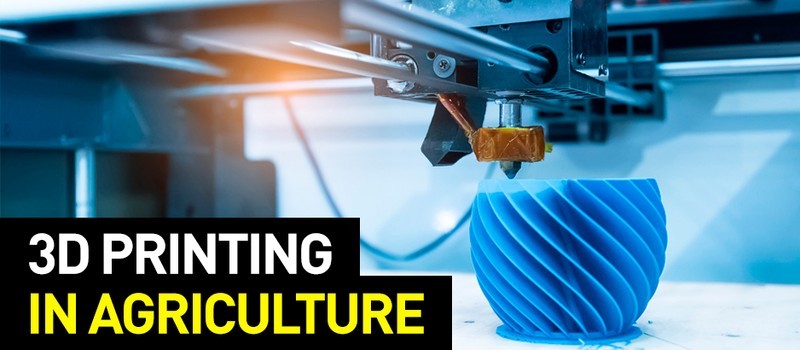
In 2018, Top 3D Shop delivered several units of additive manufacturing equipment to the Federal Scientific Agro Engineering Center VIM (FGBNU FNAC VIM) — 3D printers PICASO 3D X Pro, Total Z Anyform 950-PRO Hot+, FormLabs Form 2, Sinterit Lisa, as well as two 3D scanners — Shining 3D EinScan Pro 2X Plus and RangeVision Pro 5M. Two years later the workers of the Laboratory of Prospective Materials — a subdivision of the Center VIM — have shared their impressions of using the latest 3D equipment.
Read this article and learn more about this interesting case study.
About Organization

The “All-Union Research Institute of Agricultural Mechanization” (Center VIM: Federal Scientific Agro Engineering Center VIM) was founded in 1930 by a decree of the Soviet Ministry of Agriculture and Food. The structure of the organization has changed several times over 90 years, but the main activities continue to be the same — development and integration of the latest agricultural technology.
In 2016, Center VIM was joined with scientific institutes GOSNITI (diagnostics and repair of agricultural machinery) and VIESH (electrification of agriculture).
Now the Federal Scientific Agro Engineering Center VIM is the biggest and unique research association in Russia that provides services for all agricultural sectors.
How it Used to Be
One of the main activities of the VIM Center is to model and manufacture functional prototypes of agriculture machinery and equipment. Only 5-10 years ago the process of prototyping used in the VIM Center consisted of traditional metalworking and woodworking techniques. Polymer usage was limited to casting into silicone molds and turning and milling. Polymer parts of complex geometry — lids, gaskets, and enclosure parts — were rarely used. The ways to manufacture them were either too difficult or inaccessible.
The experts of the center started to actively research the market of additive equipment in late 2017 — early 2018. By this time they’ve already had a positive experience of small-part and single-unit production, using the services of third-party contractors: the latter were tasked with producing master models which would later be finished by the experts of the center VIM.
Choosing Equipment

Several additive technologies were considered. In the end, the equipment designed for working with the polymers was chosen since the ability to withstand UV light and harsh conditions is important for agriculture machinery.
After thorough research of the choices available on the market of 3D equipment, it was decided to stop at the three most popular and available technologies — FDM, SLA, and SLS.
FDM

While choosing the FDM 3D printers the engineers started with the most common activities of their laboratory — rapid manufacturing and prototyping. Their final choice ended up being two models— Total Z Anyform 950-PRO Hot+ and PICASO 3D X Pro.
A solution by a Russian 3D printer manufacturer Total Z was chosen due to various reasons: the experts liked its build volume (consisting of more than 500 mm in each direction), the ability to work with high-temperature filaments and general availability. The management liked the fact that the device was more affordable than other industrial FDM 3D printers such as Fortus.
They decided to get a dual-extrusion modification of the Anyform 950-PRO (can be seen on the photo above): one of the extruders is designed to work with both regular plastics as well as industrial-grade high-temperature ones— polycarbonate, PPSU, PEEK, PEKK, Ultem (filament diameter — 1.75 mm), while another extruder with an increased filament diameter (2.85 mm) can provide fast and less accurate printing with more common plastics such as ABS and PETG.
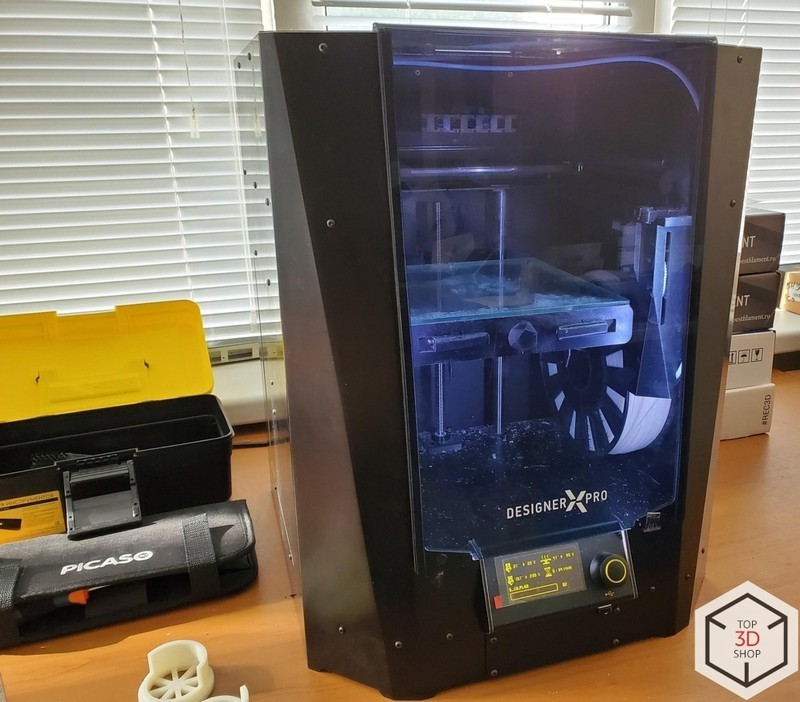
The dual-extrusion PICASO 3D X Pro 3D printer was bought as an additional device for printing small models and prototypes since its build volume is 200 x 200 x 210 mm.

A cultivator sweep with a ripper

Sensor mounting brackets for agricultural tractor

Filtering device caps

Sensor brackets and caps

Lids for flow meter fixation
SLA

The engineers chose a popular SLA 3D printer Formlabs Form 2 for producing highly accurate small parts. This device is used in the laboratory for making master models for future molding. According to the experts, the results produced by the Form 2 don’t look any different from molded ones: the surface is almost perfectly smooth, so there’s rarely a need for polishing. The examples include worm shafts, fine-module gears, and various small-sized cases.

Toothed gears (SLA)

Type TR sprayer caps and toothed gears for a sprayer pressure regulator’s drive
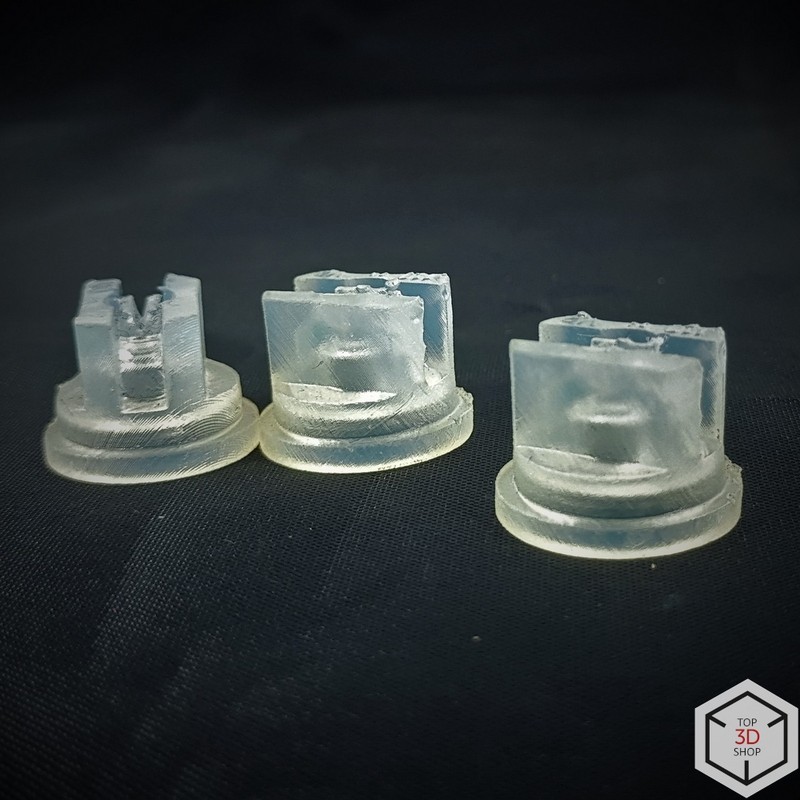
A pilot batch of agricultural slot sprayers

Master model of polyurethane casting connector
SLS

The third type of additive manufacturing equipment — the SLS 3D printers — was chosen based on build volume and affordability. Several devices were considered, including EOS Formiga by a German manufacturer. But the release of the latest model by a Polish brand Sinterit made the final choice clear — they ended up purchasing the Sinterit Lisa.
The experts use this SLS 3D printer mostly for functional prototyping small objects. Sinterit Lisa produces the parts that are ready to work under load: brackets and enclosure parts.

A toothed gear of a pump drive

An experimental batch of enclosures for proximity sensors installation

Worm shafts of the manipulator hand drive
According to engineers’ approximate calculations, the percentage of work done in the laboratory using each technology amounts for:
FDM — 90%,
SLA — 5%,
SLS — 5%.
There’s also a noticeable trend in the increasing percentage of parts produced using SLS technology. For example, the Sinterit Lisa is more often utilized for printing small pilot batches of fully functional parts that are used for complex research testing.
The FLD-35 Filament Extruder

The laboratory has also purchased a filament extrusion line FLD-35 — this piece of equipment produces a print-ready filament from more affordable granules that can be bought directly from chemical plants.
The calculations showed that using this line will pay off long-term. Today the line not only solves the laboratory’s own needs of most common types of plastic but is also utilized for extrusion for third-party clients. The engineers had the time to test the line for producing filaments of ABS, SBS, and flexibles. They are planning to start producing polycarbonate filament.

The filament produced on the FLD-35 extrusion line
Nowadays, the additive equipment of the laboratory is utilized 24 hours a day. The Total Z Anyform 950-PRO Hot+ is the most used device — the printing queue is planned for months ahead. The Total Z Anyform 250-G3 was additionally bought since the build volume of the PICASO 3D X Pro was not enough.
Cladding panels for future equipment and environmental chambers cabinets are some of the center VIM’s projects that utilize using FDM printing.

Parts of the cow milking stanchion

An enclosure of the environmental chamber’s humidifier

Hydrocyclone parts

A humidity and pressure control unit’s enclosure

A bracket for the UAV sensors
The experts print various models and prototypes of devices, parts and equipment for livestock and crop production. For example, the printers have produced a big number of parts of the stand made for testing an automatic milking stanchion. The robotic manipulator’s enclosure was also produced.

Parts of the cow milking stanchion

Robotic manipulator hand for automated crop harvesting
As the name suggests, the “Laboratory of prospective materials” also does some experimental activities. As an example, the experts have managed to master the technique of applying metal coatings to the models printed with ABS on the FDM 3D printers. The result was the ability to produce enclosures that shield the sensors from interferences.
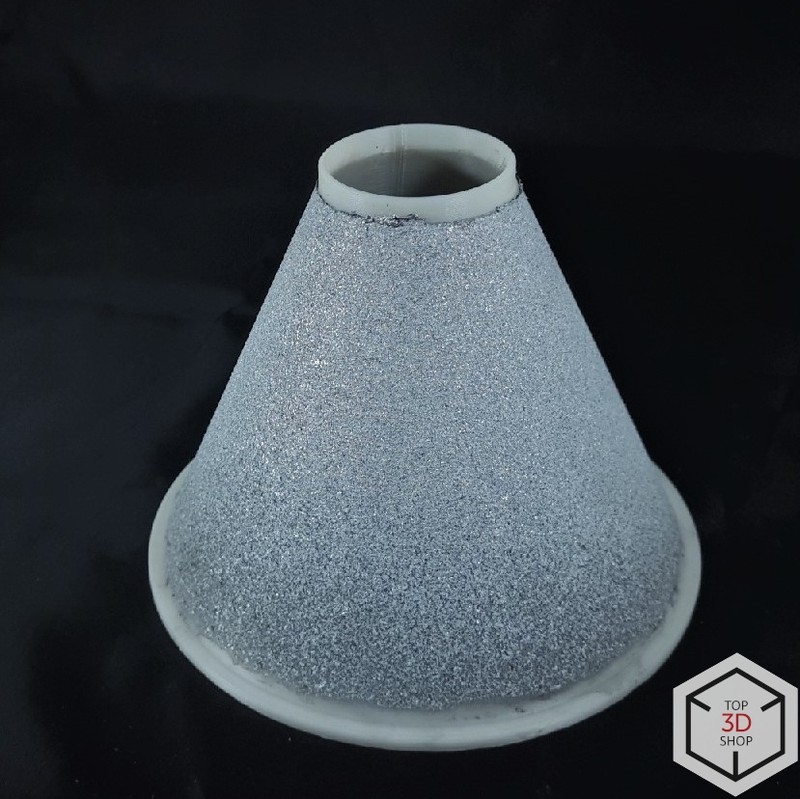
Shielded enclosure for sensor installation to the agricultural tractor.

The metal coating process
3D Scanners

Two 3D scanners — the EinScan Pro 2X Plus by SHINING 3D and RangeVision Pro 5M — were purchased at the time when the laboratory bought 3D printers.

At first, the devices were chosen for reverse-engineering purposes: the center VIM has some pieces of old technology without drawings — so digitalization of some parts with complex geometry is needed.
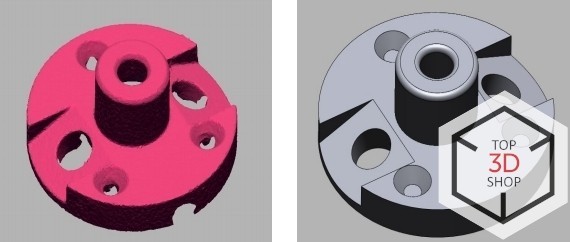
A half of a hub. Reverse engineering. Creating a model based on an example. Size: up to 0.5 m.

A rotor. Geometry control. Researching casting geometry. Size: up to 0.5 m.

A metallizer part. Reverse engineering. Creating a model based on an example. Size: up to 0.5 m.

A gearbox enclosure. Reverse engineering. Creating a model based on an example. Size: up to 0.5 m.

A blade. Reverse engineering. Creating a model based on an example. Size: up to 0.5 m.

A part of the headlamp enclosure. Reverse engineering. Creating a model based on an example. Size: up to 0.5 m.
The handheld EinScan Pro 2X Plus 3D scanner is used for scanning large parts that don’t require high digitizing accuracy. The stationary RangeVision Pro 5M is used for working with relatively small objects, sized up to 200 x 200 x 200 mm.
According to the experts of the laboratory, the scanners are used on a regular basis, but not often. The main use case is to restore the drawings, which then can be used for producing the parts. Sometimes the scanners are used for quality control.
Nuances of Work
According to the experts, there were no critical problems in the work of 3D equipment for two years. Some small issues were fixed either by the experts or with the help of support.
Working with the PICASO 3D X Pro required some getting used to — non-standard nozzles needed a precise adjustment. Printing with PLA had some problems but those were fixed thanks to recommendations from filament manufacturer (REC).
The laboratory was one of the first who purchased the large-volume Total Z 3D printer, which was the newest model at that time. Thanks to quality support by the manufacturer, all of the small issues related to using Anyform 950-PRO were fixed quite fast.
The Formlabs Form 2 3D printer had been working for two years without any issues.
Learning to work with the Sinterit Lisa required some trial and error: this SLS 3D printer didn’t have any precise guides and maintenance documentation at the time of purchase.
Pros included an open software that was used for the Total Z 3D printers. Some of the tasks required going to the ‘manual mode’ of operation — precise infill settings and changing wall thickness. Some of these things were impossible to change directly when working with the PICASO 3D.
Future Plans
Vacuum forming will be launched soon — the equipment was delivered even before the quarantine started. The features of the TVFM unit produced in Tolyatti Include: three-zone forming — 1 x 2, 2 x 2 and 2 x 3 meters, two heating zones, the ability to work with the plastic of thickness ranging from 1 to 16 mm and automatic and mechanical modes. The equipment will be used for commercial tasks, as well as laboratory activities: there are plans for producing large-sized tractor parts — kits, roofs, etc. There are also talks about purchasing a vacuum-casting machine.
Conclusions
According to the lab workers, in 2019 they were mostly observing the abilities of unfamiliar equipment. But now, a year later, the workload of 3D printers has increased several times, and some of the center’s research programs are now dependent on additive manufacturing technologies.
The new possibilities provided by the laboratory attract the attention of the experts of various generations — both young post-graduate students and experts with decades of experience in the center VIM’s structures.

![[CASE STUDY] 3D printing in Erarta museum of contemporary art](https://top3dshop.com/image/cache/catalog/blog/stigmashowandtheirraise3dn2dual3dprinter/main4-494x216.jpg)

![[CASE STUDY] 3D Scanning of an Electric Car as a Part of the R&D Process](https://top3dshop.com/image/cache/catalog/blog/review_1/3d_scanning_of_an_electric_car/image_1-494x216.jpg)
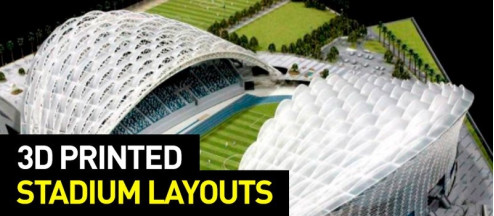
![[CASE STUDIES] Printing of Complex Airport Models](https://top3dshop.com/image/cache/catalog/blog/review_2/printing_of_complex_airport_models/image_55-494x216.jpg)
![Creality CR-5 Pro High-temp Version 3D Printer [Clearance]](https://top3dshop.com/image/cache/catalog/products/3d_printers/creality/cr_5_pro_ht/creality_cr_5_pro_ht_image10-268x192.jpg)
![Modix Big-120X V4 3D Printer [Bonus: 2-Year Warranty]](https://top3dshop.com/image/cache/catalog/products/3d_printers/modix/big_120x_v4/modix_big_120x_v4_image_16-268x192.jpg)
![Modix Big-Meter V4 3D Printer [Bonus: 2-Year Warranty]](https://top3dshop.com/image/cache/catalog/products/3d_printers/modix/big_meter_v4/modix_big_meter_v4_image_5-268x192.jpg)
Write a comment